Dublin's Mathematical Marsh's (Sep 2019)
Dublin's Mathematical Marsh's
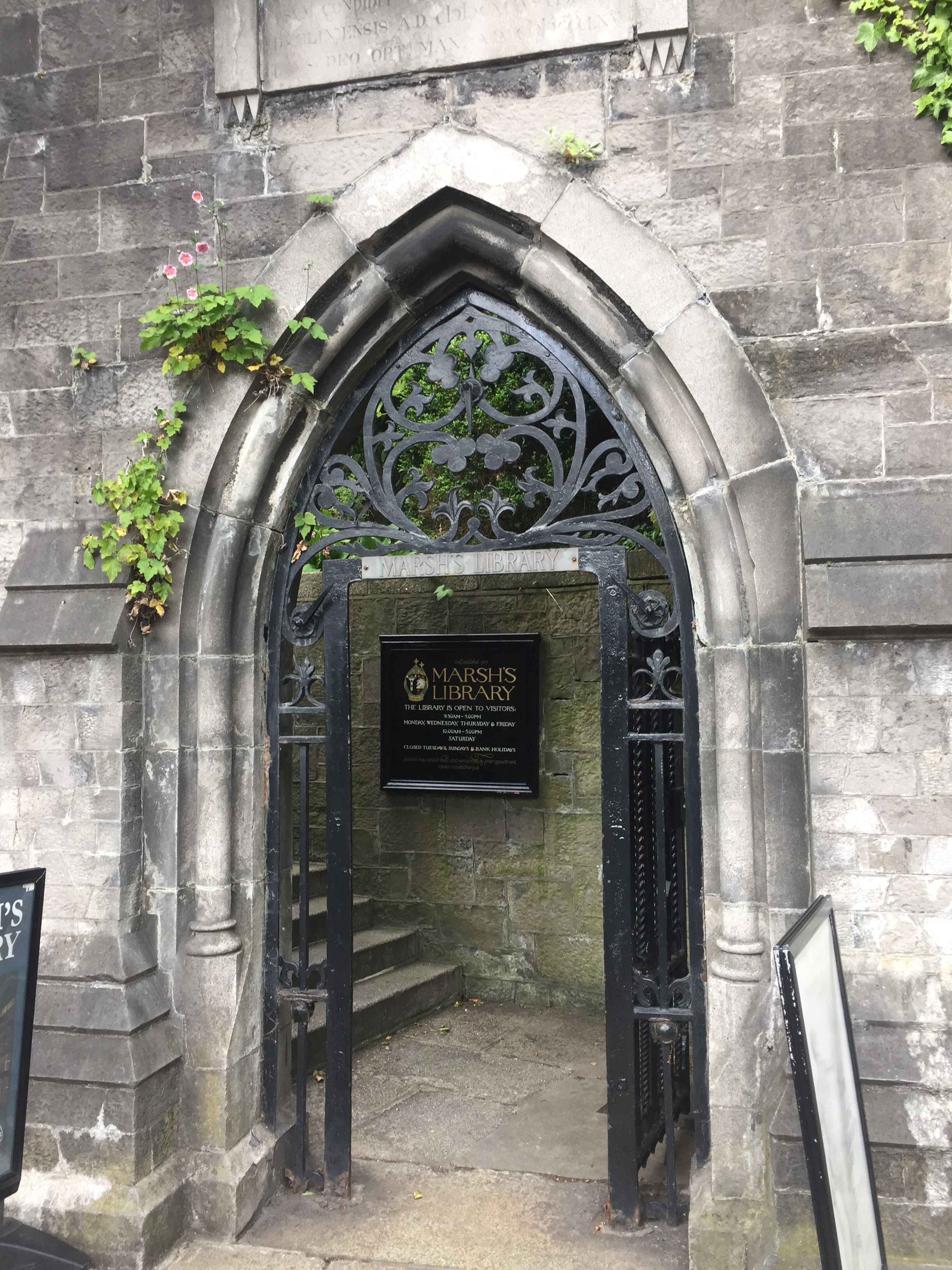
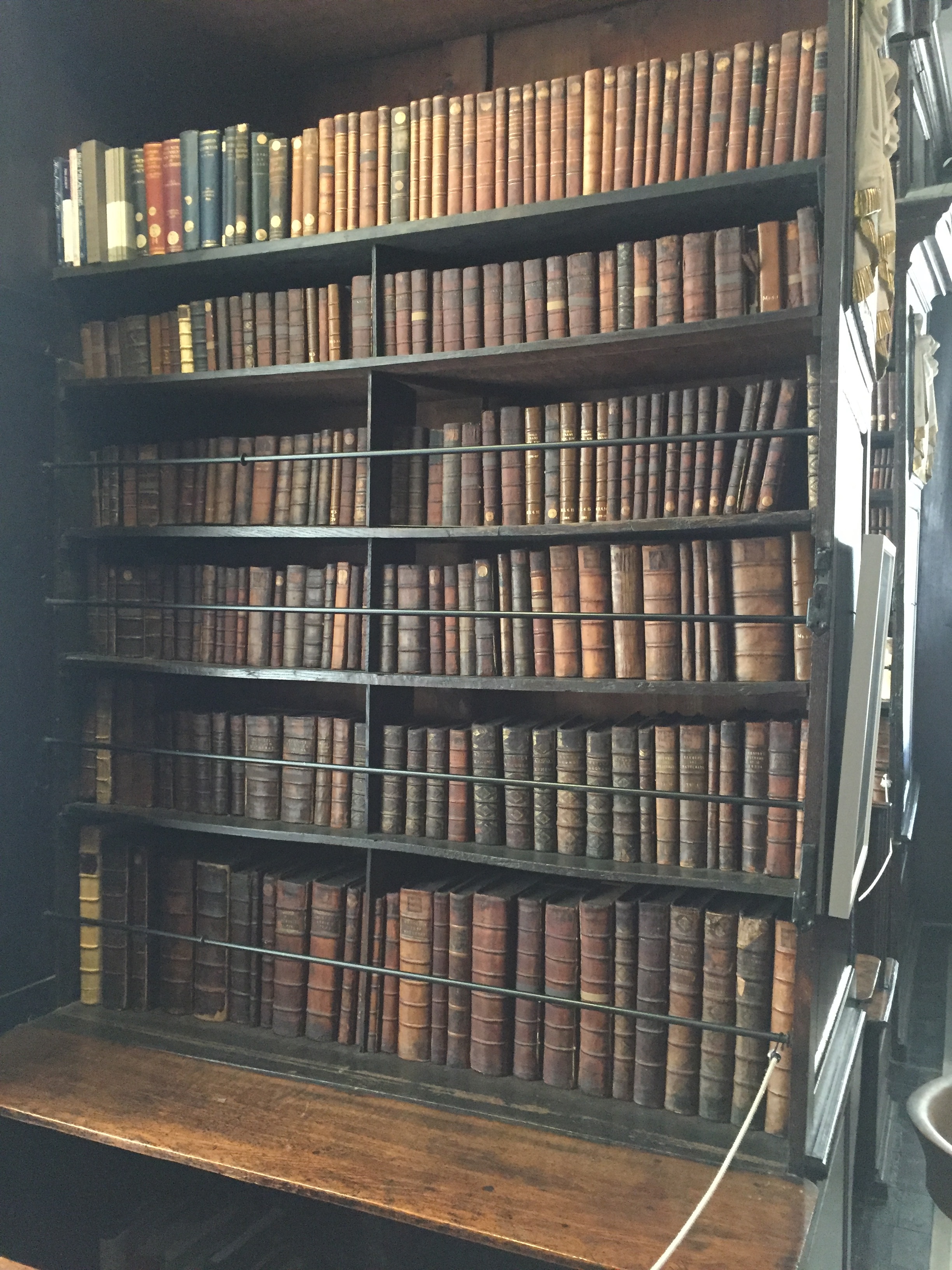
Another September publication ranked this library as the second most beautiful one in all of Ireland.

Dr Jason McElligott with Rod Gow, Kevin Hutchinson and Eoin Gill
Here, in the same spirit as a similar earlier blog on Dublin's Worth Library, we discuss some of the mathematical offerings available at Marsh's following a recent visit there. Many thanks to Library Director Dr Jason McElligott for his hospitality and for pulling out some wonderful volumes for us to peruse.
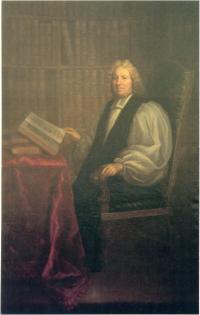

Marsh’s Greek motto (found handwritten in several of his books) means 'Truth everywhere’.
Narcissus Marsh (1638-1713) was born 20 December in Hannington, Wiltshire, England, and was educated at Oxford (Magdalen BA 1658). His career was mostly spent as a clergyman, first in England, and later in both Ireland and England. In between, he served as provost at TCD (1679-1683), and during his time there he promoted the study of Irish. From 1694 to 1703 he was Archbishop of Dublin, and resident at St Patrick's. He was an early member of the Dublin Philosophical Society.
Marsh enjoyed research in mathematics, dynamics and acoustics, and is credited with coining the word "microphone" in 1683. Marsh's Library was set up in 1707, at his own expense. There have been modest additions to its shelves in the years since, mostly restricted to 17th century (and earlier) volumes. The current holdings include 25,000 books and 300 manuscripts.

The foundation collection saw Marsh's personal library enhanced by the 10,000 book collection of English scholar Edward Stillingfleet (1635-1699), which he purchased in 1705. It also features volumes from Élie Bouhéreau (1643-1719), first Keeper of Marsh's. Several decades later, in 1745, it was supplemented with tomes acquired via the bequest of John Stearne [Sterne] (1660-1745), who was dean of St Patrick's before Jonathan Swift. There are books on theology, law, medicine, music, navigation and surveying, science, and mathematics. The volumes are in Latin, French, English, Arabic, Hebrew, Arabic, Turkish and various Oriental languages.
Searching on "mathematics" in the online catalogue yields 137 hits. As the library's Deputy Director Dr Sue Hemmens remarks,
"This is not all of the maths books, nor all that contain maths, but does give you an overview and picks up a substantial number of significant items. My presentation to IHoM4 (the fourth Irish conference on the History of Mathematics) was a whistle-stop tour through significant books. It would be possible to write an entire volume on these!"
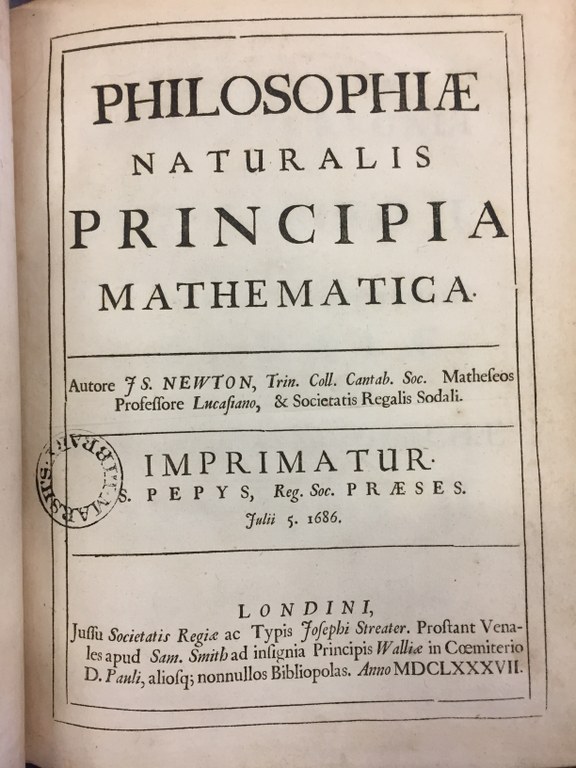

Isaac Newton's Principia (1686) is of course present. Those who have not seen its pages may well be surprised to note how little of it looks mathematical from a modern perspective. The pages shown here are atypical, most have no diagrams or mathematical notation at all.
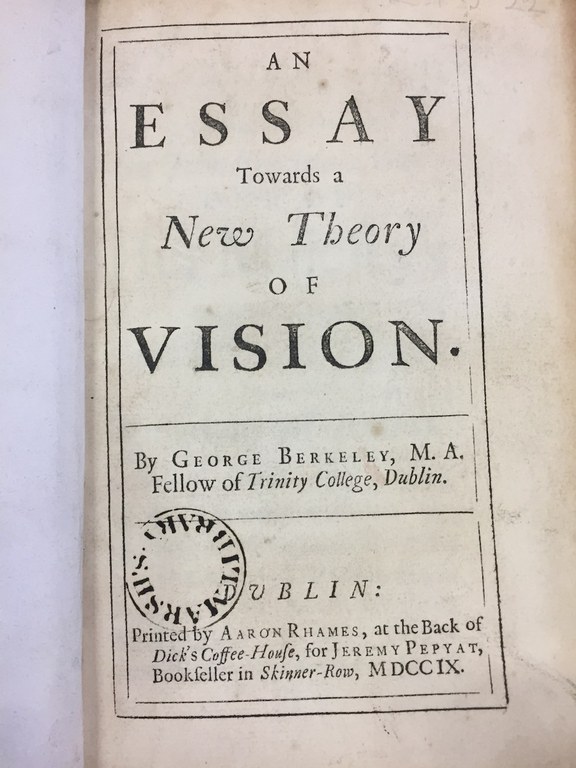
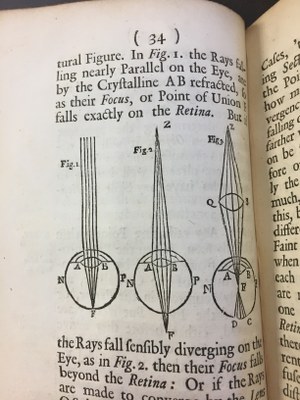
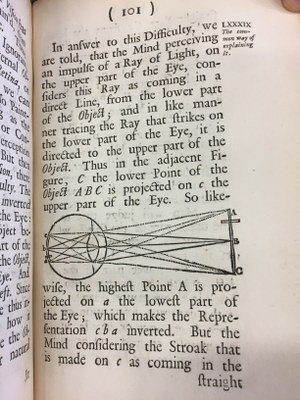
An Essay Towards a New Theory of Vision by George Berkeley (1709) (from the part of the John Stearne bequest which came to Marsh's) provides a insight into the philosopher's attempts to use geometry to analyse human vision. (A 2002 updating by TCD's David Wilkins is also of interest).
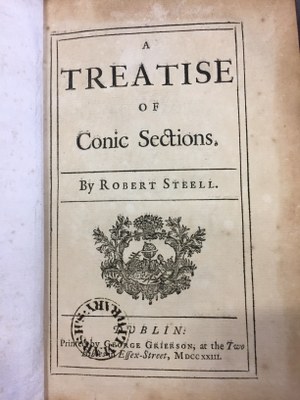
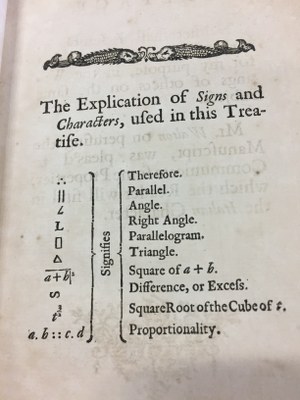
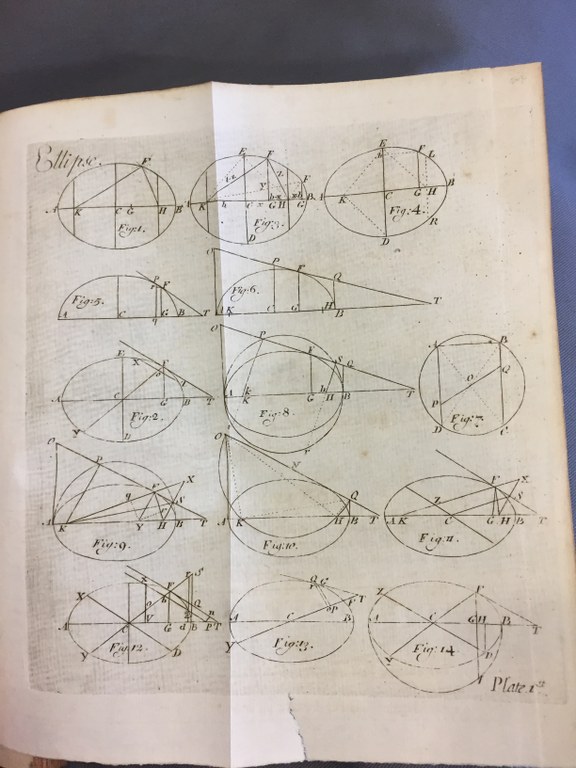
Dr Hemmens' 2017 slides provide highlights (with stunning images) of numerous other mathematical tomes to be found within the walls of the library, including key volumes by Pedro Nuñez (1567), Pitiscus (1612), Snellius (1627), Ghetaldus (1630), Thomas Harriot (1631), René Descartes (1637), François Viète (1646), John Kersey (1673), Thomas Baker (1684), and John Wallis (1685). She also discusses Marsh's own great interest in triangles and conics. In reference to the overall collection, she recently remarked:
"Most books are still here, however there were two means of attrition: theft (ongoing over first two centuries) and sale (so-called duplicates in the nineteenth century). Books that were recorded as missing in the ledger catalogue that acted as source for the computer records are included in the online records, but are indicated as missing. If you look at the records in detail, you will see more detailed provenance notes. We are gradually updating records to show these as authorities, but this is by no means complete. However, inscriptions have been recorded in the notes fields, and will also pop up in a facet on the right."
The theft issue led to some books being placed "behind bars", both on the shelves and within locked reading areas as shown in the images below.

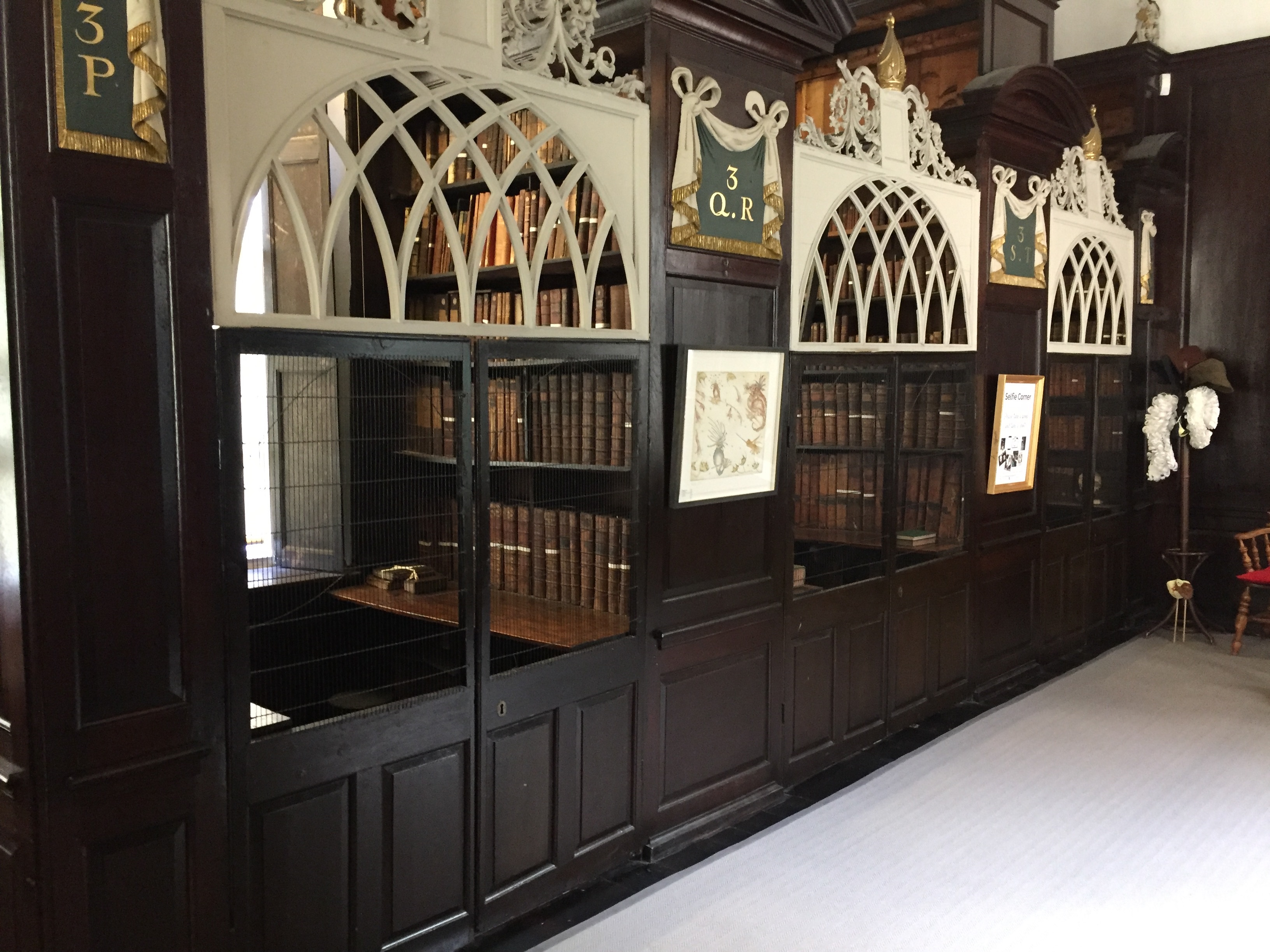
Student researchers and scholars are welcome to visit the library free, with advance notice. An online exhibition of a dozen special mathematical items is planned by the end of the year, ; it is being organised with input from Maurice OReilly of SPD/DCU and some of his students.
The library uses social media in imaginative and innovative ways. Their Twitter feed, for instance, regularly offers surprising and informative delights.
Special thanks to Marsh's Deputy Director Sue Hemmens for very valuable input, and to Director Jason McElligott for gracious hosting a tour of the LIbrary at fairly short notice. All images courtesy of Colm Mulcahy except as noted.